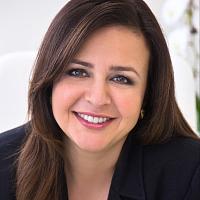News Feed › Discussions › The future of the Kang Repair
-
The future of the Kang Repair
Posted by Unknown Member on March 8, 2023 at 2:21 pmAs time passes it becomes more and more clear that anyone needing a hernia repair HAS to go to South Korea to see Dr. Kang….I recommend him on my health forums weekly…and on the FB hernia pages….you would not believe the push back i get from fools signing up for dangerous toxic butchery that is lap mesh surgery…of course i cant really blame these folks…lap mesh doctors suckered me…and i am not easily suckered. But my question is this….Dr Kang is 67 years old. I saw him post that he wants to work another 10 years…well lets pray that he does…but if he suddenly changes his mind…what is the back up plan…to guys that have gone to korea…is Dr, Kang training another generation in his groundbreaking techniques? I understand his son is working with him…but its scary the terrible options that we face outside of the kang repair. It honestly seems like the only safe way to go….I am probably heading to korea before the year is out…but it would be nice to know if there is any future for the kang repair when dr kang is gone…
Unknown Member replied 2 years, 9 months ago 9 Members · 16 Replies -
16 Replies
-

Dr. Peterson has put people in wheelchairs removing lap mesh open, read his reviews on vitals, ratemds etc. He tried talking me into that and once I said bit lap mesh has to be removed the same way its put in… he stopped saying anything and said well kid which I was 26vat the Saud you’ve done your research I wish you the best. He performed bilateral open surgery on a lap mesh patient and ruined him totally and man other as with Dr. G in Ohio. They only know open surgery so they talk you in on what they know. I know a dude went paid 9,000 dollars to be so much worse if after removal and the dude was a yoga instructor. Peterson us one of the bad ones and people know open even if your mesh was placed open it’s the way to go it’s way more invasive. Maybe fir an initial repair in the first place he can di a good job bit with removal avoid at all costs!
-

Insurance plans can change dramatically from state to state. That might explain the differing opinions on how insurance works. And, each state typically has different levels of risk that a person can choose to pay for. There really are no broad statements that can be made about insurance by country, when the United States are part of the conversation. We are a collection of individual states, each with their own rules and guidelines.
This web site shows just some small differences but the range is worth noting.
-

I have regular US health insurance (employer provided), and they paid for my hernia surgery in Canada as out-of-network with no problem.
-

Thank you Dr. Towfigh, that’s fascinating re: insurance companies paying less for procedures requiring more time, potentially more skill, and unique equipment. All the best care seems to be heading towards self-pay and I wouldn’t blame any physician for refusing to accept insurance.
@G, Korean nationals receive govt. healthcare coverage and my understanding is that they pay a few hundred dollars in co-pay for a hernia repair. Foreigners pay the full freight which is $2,000 for single-side repair. I don’t believe any regular U.S. health insurance companies would cover any medical care outisde the country.
-

What I find fascinating isn’t whether mesh or non mesh pays more, rather instead why there is a commonality among many pure tissue only surgeons to opt out of the insurance realm altogether. In the case of pure tissue surgeon Dr. Petersen his business is actually named “No Insurance Inc”. In the case of Dr. Kang many posters on this site have mentioned paying “cash” (not using insurance) when being treated by D. Kang. What is the benefit for pure tissue no mesh surgeons like Kang and Petersen to opt out of the managed healthcare insurance system? Does a more managed healthcare system, aka insurance limit ones choices?
-

Here’s your answer regarding insurance reimbursement:
Open inguinal hernia: surgeon gets paid the same from insurance whether they use mesh or not, regardless of time spent
Laparoscopic or robotic inguinal hernia repair: surgeon gets paid the same by insurance regardless of laparoscopic or robotic approach. This payment is LESS than open approach. Yes. For real.
How much the facility (hospital or surgery center) gets paid is much more convoluted and depends on various contracts. Some insurances pay more to the facility if you use mesh. Others don’t and thus the profit margin for the facility is less if you use mesh as an implant. Also, most insurances do not pay more to the facility if the robot is used vs laparoscopic, even though robotic repairs can be much more expensive. Most insurances do pay a little bit more to the facility for laparoscopic vs open, but often not enough to make lap more profitable.
I hope this settles any questions about surgeon or facility incentives to use mesh or the robot. There are none.
-

If you’ve ever seen the initial bills, the first set, for a procedure from a provider to an insurer you’ll realize that the whole process is very complex and bureaucratic. Mine were sent to me for some reason that I didn’t understand and I watched them go from 10’s (multiple 10’s, shockingly high) of thousands of dollars down to the thousands after the process completed. The first bills come through and then they are negotiated in to a form that fits the process.
As far as the medical-industrial-insurance complex don’t forget that the insurers have codes for each procedure that they will readily reimburse. Procedures that do not have a code have to be explained. The surgeon that implanted my mesh had to go before a board, of surgeon-peers if I recall correctly, to explain what he was proposing when I had mesh problems. I had forgotten about that. Actually I can’t remember clearly who exactly had to go before the board it might have been the one that removed the mesh, Dr. Billing. Often I feel like I have PSTD from that time in my life. I could probably find it in my notes but it’s probably not relevant. The approval boards do exist.
My basic point is that the high volume nature of the industry leads to it becoming very bureaucratized. Once bureaucracy takes hold then results matter much less. The process becomes the goal, not the results.
-

I’m sure a surgeon and/or anyone who works for an insurance company could weigh in and confirm, but I would almost guarantee that reimbursement for a laparoscopic or robotic procedure will be significantly higher than a 20-minute pure tissue repair.
We’re already heading in the direction of more self-pay for speciality procedures, concierge medicine etc. so I agree with G re: this being a self-pay option if it ever came to the U.S.
-

I don’t see how this has anything to do with insurance. Why would the surgeon get less from insurance for tissue vs mesh? Regardless, insurance doesn’t pay much for these surgeries, which is problematic. Surgeons can’t pay too much attention per case, and they have to rush through many per surgery day to compensate with volume for the low pay. For example, Dr. Yunis told me he does 6-9 per day.
-

cpk303 Thanks for you excellent explanation of why pure tissue no mesh repairs are so difficult to find in the USA. It would seem that “no insurance” surgeons like Dr. Petersen who does no mesh pure tissue repairs and removes mesh is doing well in Nevada. The two options I gleaned from your excellent post are in order to make a living as a no mesh surgeon you must be high volume like Dr. Kang or no insurance like Dr. Petersen. Maybe more creative and/or altruistic surgeons who want to practice the “ancient art” of no mesh pure tissue repair can get some inspiration from your post. I would miss having the ability to choose in my healthcare decisions, although those caught up in the managed healthcare system already have to some extent.
-

That makes sense. Though I am always amazed at how many surgeries my surgeon does her in the US in a given day as it is, factoring in how involved and intense the whole process is. That said, he’s doing maybe 5 at most and not 10.
-

I’ll chime in here with my two cents. Sadly, in the United States, surgery options and availability are often influenced by insurance companies and the medical device industry, powerful entities that also influence teaching methods. This is not the surgeon’s fault. U.S. surgeons have sky high costs today (i.e. malpractice premiums, facilities, staff etc.) and typically receive pennies on the dollar from insurance reimbursement. Think about what an insurance company would reimburse for a 15-minute hernia repair, local anesthesia, and a couple of prolene or PDS sutures? Certainly not enough to pay the bills unless they were able to do 10 a day like Dr. Kang, which is highly unlikely.
Dr. Kang has three operating rooms reserved just for him each day. He rotates among them in order to get through up to three repairs per hour without waiting for operating room or patient prep. I just don’t see this model being viable in the United States. I’m personally hopeful that the Kang repair spreads beyond Korea but I think it would more likely end up in a few other specialty surgery locations, and probably still outside of the United States.
-

I believe Dr. Kang’s ultimate hope for all this hard work is that like Shouldice, Desarda, etc, his method will eventually be widely accepted and practiced the world over. I believe he’s continuing to do studies and publish so that he has the evidence to present to a much broader audience proof that his technique works and should be done by others, who will come to him to learn. Obviously it’s not likely to make much of a headway into the whole mesh dominated world of hernia repair. But if it’s indeed as great as everyone says, eventually it will take hold with more surgeons in other countries. And I am sure he’s training his son to do it as well in the meantime.
-

Is Dr Kang really over 60? I thought he was late 50s?
Wish I looked as good!
I must have had a hard, hard life!You’re right Chuck, it would be a shame if no one took over from Dr. Kang senior and the Kang repair no longer existed.
How is the FB group going? I’m not on FB myself but something access it via my fathers, he’s like Dr Kang in that my father doesn’t look his age either (90).
Not sure what happened to me . -

I believe I read on here (from him) that he’s done some of it. I will have to try and find his posts. Obviously, we just learned about the book he published. Perhaps it’s only handed out at the hospital. But I do think he’s been meticulously keeping records, possibly for the purposes of soon publishing some sort of paper on his success.
-

He trained his son, but he hasn’t done any of the other things you mentioned in terms of spreading his techniques, unlike Dr. Desarda.
Log in to reply.
